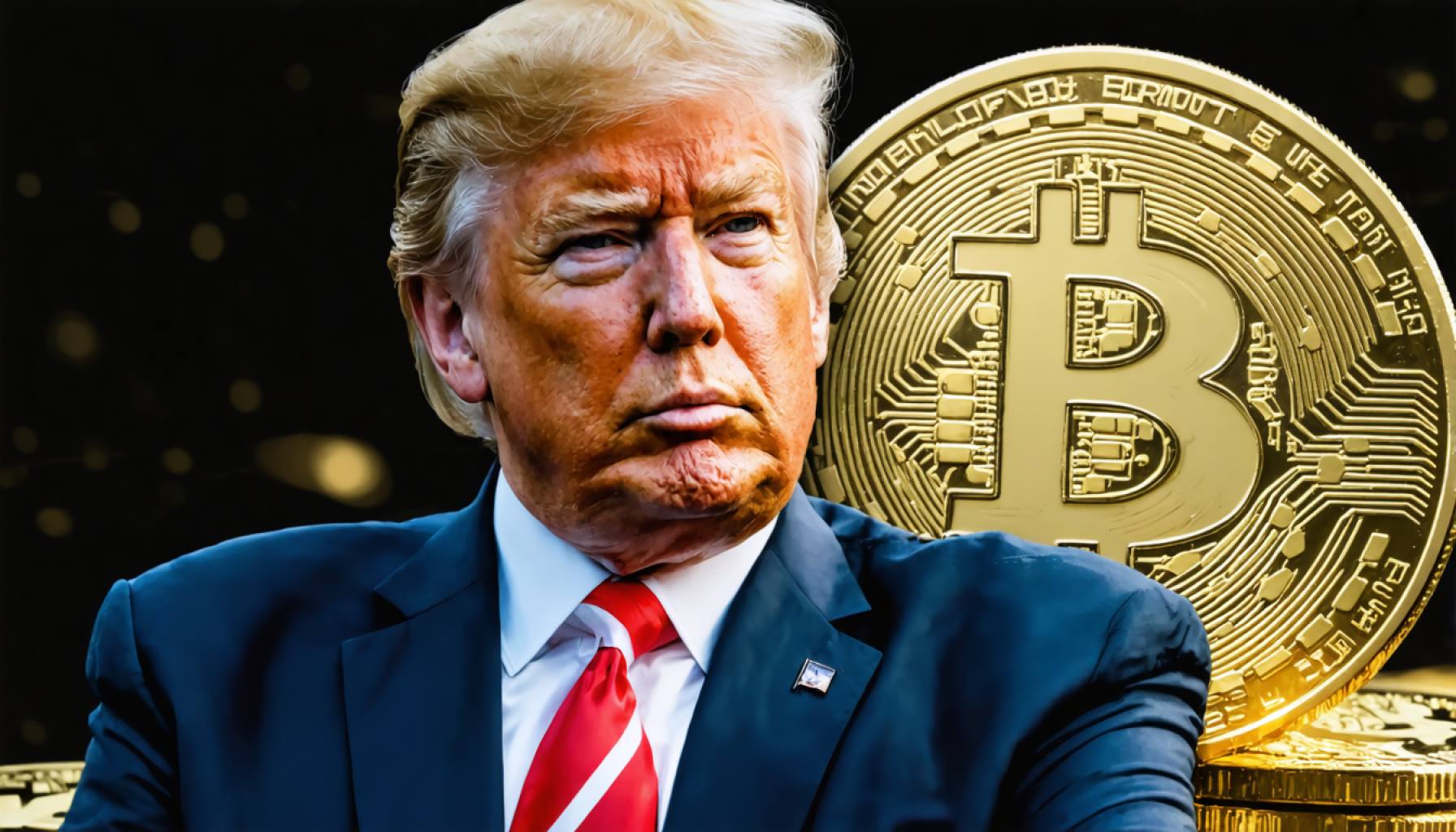- Cryptocurrencies like Bitcoin are not immune to market volatility, as seen in the recent 10% price drop amidst global economic shifts.
- President Trump’s pro-crypto stance has not insulated Bitcoin from the economic impact of newly imposed tariffs.
- The price of Bitcoin dropped below $78,000, contrasting sharply with its peak near $110,000 at Trump’s second inauguration.
- Despite political support, Bitcoin’s future remains tied to market emotions and external economic influences.
- Investors are reminded of the dual nature of cryptocurrencies: innovative yet susceptible to risks.
- The enduring appeal of digital currencies underscores the need for balanced innovation and cautious strategy.
- Crypto’s journey continues, inviting investors to remain adaptive and prepared for future market fluctuations.
Amidst the swirling chaos of global markets, the glittering allure of cryptocurrencies faces its latest challenge. The latest plunge in Bitcoin prices reveals a sobering truth: not even the unbridled enthusiasm of Bitcoin’s biggest political champion, President Trump, can shield it from the volatile winds of economic change.
As the president declared sweeping tariffs on imports, the shockwaves rattled through the corridors of financial markets. Once seen as a fortress of value, Bitcoin tumbled by 10%, dropping to a surprising low under $78,000. A stark contrast to its glistening peak near $110,000 during Trump’s second inauguration—a moment when Bitcoin loyalists believed the digital currency had ascended to unparalleled heights of stability and recognition.
The promise of transforming America into the “crypto capital of the planet” coursed through Trump’s campaign, resonating with investors eager to see digital currency flourish under favorable policies. The president duly reciprocated, weaving support for crypto into the fabric of his administration, appointing regulators who looked kindly upon Bitcoin and even advocating for a national reserve of the currency.
However, the economic landscape is an intricate dance of optimism and risk. Cryptocurrencies, for all their futuristic promise, remain tethered to the emotions of the market. The eruption of tariffs has stifled investor confidence, ushering in caution where once there was fervor. This caution ripples beyond politics and technology, echoing into the realms of everyday transactions and future financial strategies.
Yet amidst these market tremors, a telling narrative emerges—a reminder to investors that Bitcoin, like all assets, is susceptible to external shocks. It’s a clarion call to recognize the duality of cryptocurrencies as both revolutionary and risky. As digital currencies continue to carve their place in the global economy, the lessons of today urge us to calibrate our approach, balancing innovation with caution.
The current downturn does not spell the end for digital assets, nor does it dismiss the crypto ambitions propelled by the president. Instead, it reinforces a timeless financial truth: markets move with the tides, and adaptability remains the cornerstone of success.
With the landscape ever-changing, the allure of Bitcoin and its ilk endures, inviting investors to tread the fine line between bold innovation and sagacious management. As we navigate this emerging era, one thing is certain—crypto’s journey is far from over, and its next chapter is poised to be just as unpredictable and exhilarating.
Can Bitcoin Weather the Storm? Insights and Strategies for Crypto Investors
Bitcoin’s recent price dip underscores the volatility inherent in cryptocurrencies, reminding both investors and policymakers of the asset’s susceptibility to external factors, including shifting economic policies and global market dynamics. While the allure of Bitcoin as a decentralized financial instrument remains intact, understanding its vulnerabilities and fortifying one’s investment approach is crucial.
Economic Policies and Bitcoin: A Complex Relationship
The interplay between governmental policies, such as tariffs, and cryptocurrency markets is complex. Tariffs can influence inflation and global trade dynamics, which in turn affect investor confidence in various asset classes, including cryptocurrencies. Whether policies are supportive or restrictive, they significantly impact Bitcoin’s trajectory.
Real-World Use Cases: Bitcoin Beyond Speculation
While often viewed as a speculative asset, Bitcoin has tangible uses. It facilitates cross-border transactions with lower fees than traditional banking and serves as a store of value in economies facing hyperinflation. Countries like El Salvador have embraced Bitcoin as legal tender, highlighting both potential and challenges in its mainstream adoption.
Industry Trends: Institutional Adoption and Regulatory Development
Financial institutions increasingly integrate cryptocurrencies into their offerings. Platforms like Paypal and Square enable Bitcoin transactions, while asset managers explore cryptocurrency investment funds. Regulatory frameworks continue to evolve, with varying levels of acceptance worldwide.
Navigating the Crypto Landscape: Key Strategies for Investors
1. Diversification: Spread investments across multiple asset classes to mitigate risk. Consider including a mix of cryptocurrencies and traditional assets.
2. Research: Stay informed about market trends, regulatory shifts, and technological advancements. Utilize credible resources and expert opinions to guide decisions.
3. Risk Management: Set stop-loss limits and regularly reassess your portfolio based on market conditions.
4. Long-Term Perspective: While short-term fluctuations are prevalent, viewing Bitcoin as part of a long-term investment strategy can help weather volatility.
Pros and Cons of Bitcoin
Pros:
– Decentralization reduces reliance on traditional financial systems.
– Bitcoin can act as a hedge against currency devaluation.
– Potential for high returns with increased adoption and technology development.
Cons:
– High volatility and susceptibility to market sentiment.
– Regulatory uncertainty across different jurisdictions.
– Environmental concerns due to energy-intensive mining processes.
Predictions and Market Forecasts
Experts predict that Bitcoin will continue its roller-coaster ride, influenced by technological innovation, regulatory changes, and macroeconomic factors. As nations and companies develop blockchain technology, Bitcoin’s foundational influence remains pivotal.
Conclusion and Recommendations
For the savvy investor, Bitcoin offers both an exciting opportunity and a stark challenge. It’s essential to balance bold innovation with cautious strategy. Monitor market trends, understand the regulatory environment, and diversify your portfolio to maximize potential gains while minimizing risks.
By embracing these strategies, investors can better position themselves to capitalize on Bitcoin’s future growth while navigating its inherent challenges.
For more information on the evolving landscape of cryptocurrencies, visit Coinbase or Binance.
